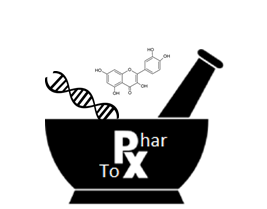Transgenerational effects Paternal and maternal exposure to genotoxins and health risks in their offspring
PHENOTYPIC EFFECTS IN OFFSPRING
A large number of studies on maternal over- or under-nutrition during pregnancy have been performed to investigate the adverse effects at adult age. A clear example is given by the Dutch famine, which occurred during the winter of 1944-1945. Here, reduced nutrient supply during the first trimester of pregnancy resulted in a higher prevalence of obesity and cardiac heart diseases in the adult male progeny. This study produced evidence for the concept of fetal programming, namely an attempt of the fetus to adapt to adverse conditions encountered in utero resulting in adaptations that will be detrimental when these conditions will not prevail later in life.
Over the years, it turned out that also other diseases at adulthood are linked to in utero malnutrition. The concept of fetal programming showed that fetal nutritional deprivation is a strong programming stimulus. However, in many Western societies, maternal nutrition is sufficient or even excessive. For instance, maternal high saturated fat diet resulted in insulin resistance, obesity and hypertension in offspring at adult age, which indicates that developmental problems can not only be a consequence of under-nutrition, but can also be achieved by an unbalanced diet during pregnancy. Thus, maternal over-nutrition can be deleterious to the health of the offspring and results in a phenotype of the offspring that is linked to increased health risks in adulthood.
MUTATIONS
Polycyclic aromatic hydrocarbons (PAHs), like benzo(a)pyrene (B[a]P), are well known environmental and occupational pollutants. Subjects exposed to B(a)P are at increased risk to develop cancer. Although it is known that B(a)P induces gene mutations in somatic cells, it's role in germ cell mutagenesis has not been thoroughly investigated. Some preliminary data indicate that it is likely that paternal exposures to PAHs may induce mutations in the DNA of gametes. Subsequently, children can inherit these mutations, which might have been induced after exposure to the DNA damaging agents at different stages of spermatogenesis. On the other hand, there is also evidence that germ cells are well protected from paternal exposures by molecular defense mechanisms. As such, it is still not clear whether B[a]P poses a risk for germ line mutations.
Associated Staff
Frederik-Jan van Schooten
Professor, Head of the department
Prof. dr. Frederik-Jan van Schooten Department of Pharmacology and Toxicology, NUTRIM School of Nutrition and Translational Research in Metabolism, more ...
Roger Godschalk
Associate Professor
Dr. Roger Godschalk graduated in Biological Health Sciences in 1995 at the Maastricht University (The Netherlands). He specialised in genetic toxicolo more ...
Daniëlle Pachen
Technician
Daniëlle Pachen studied at the technical school for chemistry in Heerlen, and she is specialised in analytical an instrumental techniques. From 1991 s more ...

